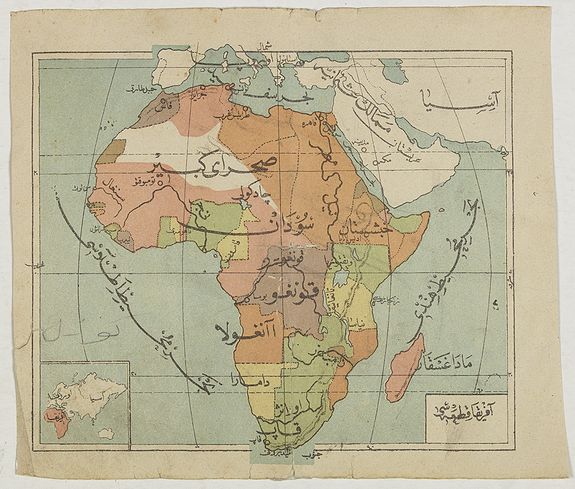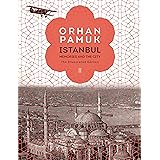List of lands directly subordinated to the Ottoman Empire: Africa
| State | period | The total time | name at that time | |
| Sweetcorn | 1517-1882/1914/1923 [14] | 365/397 years | Sweetcorn | |
| Libya | 1551-1912 | 361 years | Tripoli-Benghazi-Fizan | |
| Algeria | 1517-1830 | 313 years | Algeria , Fezzan County | |
| Tunisia | 1512-1535 1569-1573 [15] 1574-1881 | 307/330 years | Tunisia | |
| Sudan | 1517-1882/1914/1923 [16] | 365/397 years | Nubia, Darfur, Kordofan, Bahr-ul Gazel | |
| Eritrea | 1555-1885 | 330 years | Abyssinia | |
| Djibouti | 1555-1884 | 329 years | Abyssinia | |
| Somali | 1554-1885 | 361 years | Abyssinia/Zayla District | |
| Fas[17][18][19][20] | 1545-1549 [21] [22] [23] , 1554, 1558-? [24] [25] [26] 1576-1587 [27] [28] [29] [30] [31] 1792-1795 (north) [32] | 20 years | Moroccan Sultanate | |
| East Morocco | 1517-1830 | 313 years | Pasha of Algeria | |
| Eastern Ethiopia [33] | 1874-1882 | 8 years | Emirate of Harar | |
| Niger [34] [35] | 1875-1906 | 31 years | Sanjak of Fizan/Kavar District | |
| Chad [35] [36] | 1875-1912 | 37 years | Sanjak of Fizan/Reşade District | |
| Kenya [37][38][39][40] | 1584-1589 | 5 years | Mombasa | |
| Uganda [41] | 1872-1882 | 10 years | Hatt-i Ustuva Province |
Africa
Moroccan Sultanate
The Moroccan Sultanate in North Africa was placed under its protection for the first time in 1553. Algerian Governor Salih Pasha, who did not leave unanswered the support of Abou Hassoun, the deposed king of Dost Vattasi , entered the city of Fes that year and enthroned the aforementioned person. However, in September 1554, Saadi leader Muhammad al-Sheikh recaptured the city of Fez. Thus, the Ottoman protectorate in Morocco could last for a year.
In 1576, this time, Abdülmelik, one of the Saadis, asked the Ottomans for help to overthrow his nephew, Muahmmed al-Mutevekkil, the King of Morocco, and even took part in the expedition that resulted in the Ottoman conquest of Tunisia (1574). The Ottoman army, which entered Fez again in 1576, overthrew al-Mütevekkil and placed Abdülmelik on the throne. Thus, Morocco came under Ottoman rule again.
When the deposed Sultan al-Mutevekkil called the Portuguese for help, the Battle of Vadiyüsseyil took place, in which the Portuguese King Sevastiao and al-Mutevekkil fought on one side and Abdülmelik, supported by the Ottoman army, on the other. (August 4, 1578) As a result of the war, all three kings were killed, the Portuguese army was damaged enough to fall under Spanish rule two years later (1580), the Portuguese Navy was destroyed by the Ottomans off Tangier , and the pro-Ottoman Ahmed al-Mansur ascended the throne. The Ottomans withdrew from Moroccan lands, leaving behind an out-of-state Portugal, which even lost its sovereignty, and a Moroccan sultan who did not pose a threat to Algeria and was inclined to the Ottomans. In this context, the Ottoman protectorate over Morocco lasted for a total of three years, 1553-54 and 1576-78.
The Moroccan Sultanate, which became stable after getting rid of the Portuguese threat and internal turmoil, conquered today’s Mauritania, Senegal and Gambia, destroyed the Songhay Empire in 1591 and captured the present lands of Niger, Mali and Burkina Faso. However, these conquests did not take place during the Ottoman patronage, as well as in the XVII. In the 19th century, the Ottoman Empire’s sovereignty over Algeria began to weaken.
Central Africa and the Sahara Desert
In 1552, Algerian Governor Salih Reis marched into the Sahara Desert for the first time and captured the cities of Ouargla and Touggourt [47] . In 1554, the Fezzan region joined the Tripoli State. During the governorship of Turgut Reis , Kanem – Bornu dominated the lands of Chad and Niger and the north of Nigeria and Cameroon .By sending an envoy, he declared that he recognized the Ottoman Empire’s overlordship and demanded that the Sahra-Tripolitan caravan route be open to them as before. In this way, the first Ottoman-Born relations were established. In 1555 an agreement was also signed. This was also a trade agreement and friendship alliance. In 1574, Sultan III. In the time of Murat, a delegation of ambassadors from Kanem Bornu came to Istanbul.
The Ottoman Empire committed to ensure the security of the Hajj and Trade route from Kanem Bornu to Mecca and Medina, while Kanem Bornu ensured the security of the golden road coming from North Sudan and reaching the Ottoman ports in North Africa via the Great Sahara. This strategic alliance After the discovery of America, it stemmed from the Ottoman state’s concern to secure its gold needs in the face of the precious metals that came to Europe in large quantities. On the other hand, Portugal, which was effective in West Africa, was trying to shift the gold route from the Great Sahara to the Atlantic Ocean with the help of Morocco. [48] .
In 1580, Bornu Sultan İdris Alaoma sent an envoy to the Ottoman Empire, reaffirming his subordination, and this time demanding that firearms be sent. The sultan of the period III. Murad sent the requested weapons to Ngazargamu, the capital of Bornu in Nigeria today, with an embassy of 200 people and a delegation of gunsmiths, and in this way, firearms entered the Sahara for the first time in history [49] . With the fulfillment of this request, Sultan Alaoma XIX. He expanded the borders of his sultanate, which would be the only sovereign state in the region until the end of the century, and made his country prosperous by securing the Sahara trade routes.
Later, Austria (1593-1606), Poland (1620-21) and Iran wars (1578-90, 1603-12, 1615-18, 1623-39), Celali revolts, as well as internal problems as a result of the Tripoli Province moving away from the central control. The Ottoman Empire, which was struggling, was cut off from the region. The Ottoman Empire remembered its laws in the region when the French colonialism spread to West Africa, upon the request of the Muslim kingdoms and sultanates in the region, and by the way Bornu. However , after the 1877-78 Ottoman-Russian War , the Ottoman Empire, whose army was deeply damaged, tried to get results with diplomatic initiatives, but could not prevent the region from gradually entering the French occupation.
East Africa
In East Africa, since the beginning of the 16th century, many small sultanates in the region started to receive help from the Ottoman Empire against the Portuguese threat, and although the Ottoman Empire held control over the region from Somalia to Maputo (Mozambique) between 1585-1586. From 1589 onwards, it lost the supremacy to the Portuguese.
In Central Africa, as of the second half of the 19th century, the Hatay-Istiva Province was established in Uganda, and the area of influence of the state expanded to today’s Congo, Central African Republic, Rwanda and Burundi with the patronage agreements made with the native dynasties around this province. However, dynasties, especially around Uganda, change sides frequently; sometimes they were on the European side, sometimes they were on the Ottoman side.
Places affiliated with the Caliphate in Africa
Comoros , Kenya [56] , Tanzania [56] , Mozambique [56] , Republic of South Africa [57]





















